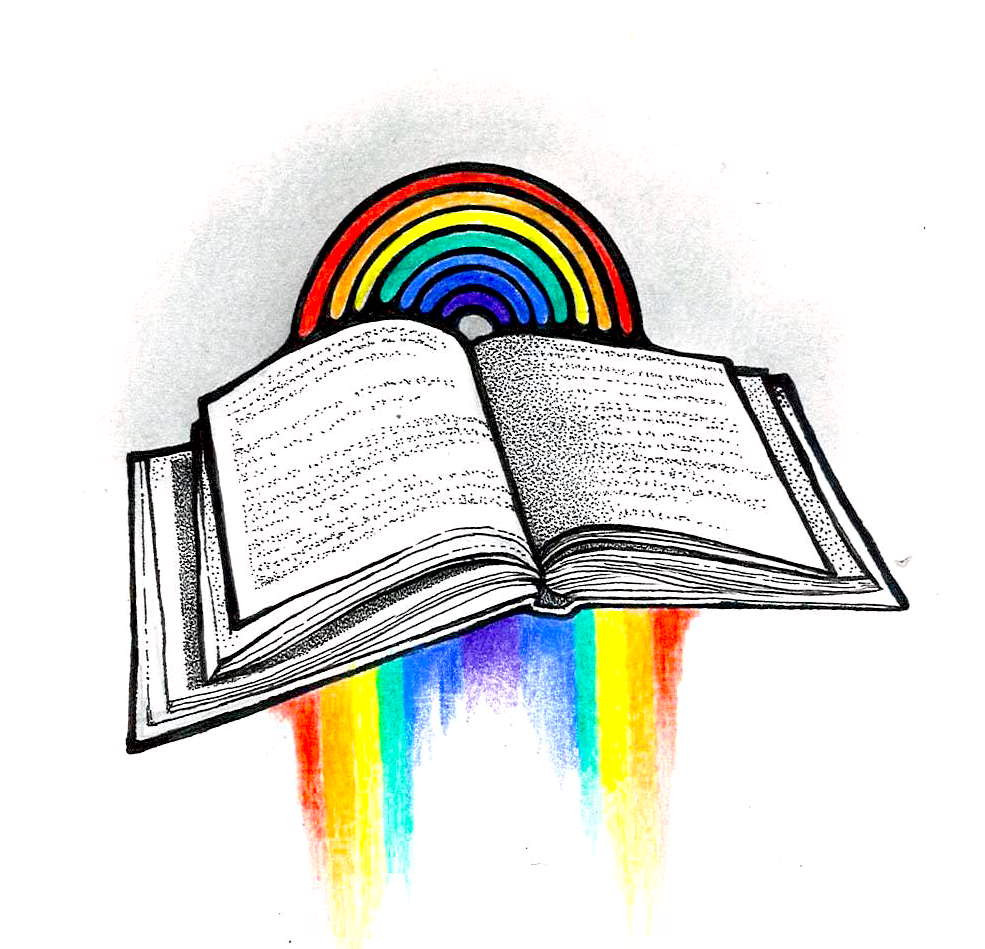Reading in Colour
Visibility matters

Illustration by Gabrielle Funk
Willa Cather, an American novelist, published a short story about the life of a gay boy named Paul in 1905, never once overtly discussing his sexuality. Instead, she used suggestive techniques and affectations to hint at his sexual orientation, describing his traits, his dress and the friends he admired.
Oscar Wilde is similarly known for hinting at homosexuality. Because these authors were writing in an era when queer identities were not openly discussed, they left their characters’ sexualities to speculation. Now, however, hinting is no longer enough.
Many authors now have the freedom to write openly about queerness. However, marketing queer literature remains a predicament for some publishers. Hachette Book Group explains that books with LGBTQ+ themes remain underrepresented in publishing, “due to censorship and arguments that LGBTQ content is ‘niche,’ and therefore not commercially viable.”
This is our problem as a society, because we have been complacent. How many people who identify as other than LGBTQ+ read literature by LGBTQ+ authors or including LGBTQ+ themes?
If readers demand more representation in literature, authors will likely incorporate more LGBTQ+ characters from different races and belief systems, doing all manner of things in life, as they actually do. Publishing companies and booksellers would be pressured to recognize that queer themes can exist in any genre and might begin to adjust their marketing strategies accordingly.
The few LGBTQ+ stories that actually get published are, according to LGBTQ+ blogger Meg Cale, often “centred on coming out or tragedy.” These stories are, of course, vital, but there are multiple dimensions to all people that should be reflected in literature. Readers would benefit from encountering more diverse narratives about queer people, including stories that aren’t focused definitively on sexuality.
When readers see LGBTQ+ representation in books, they can build empathy and understanding that applies to interactions they have in the real world. This creates a crucial shift in the social consciousness, making society as a whole more inclusive.
People within the LGBTQ+ community and those outside of it must see the importance of representation and actively participate in making it happen.
No progress will come from sitting around and quietly saying to ourselves and the few people around us that LGBTQ+ stories ought to be included. Instead, people should begin to pick up books that include LGBTQ+ themes and characters and demand intersectional representation.
Visibility matters. LGBTQ+ characters and themes should be a part of mainstream literature. Stories about all facets of their lives should be included in books.
As the Hachette Book Group so aptly explained, “not only can these stories educate and inform readers who do not identify as part of the LGBTQ community, they can also portray a path in life that LGBTQ readers may not have thought possible.”
Valerie Chelangat is a Kenyan-Canadian writer. She loves Winnipeg but struggles with the winter. She gets through the season by reading any books she gets her hands on and drinking too much tea.
Published in Volume 75, Number 10 of The Uniter (November 19, 2020)







